I'm so excited to share this with you!
I knew people made their own soap long ago and there were some people crazy enough to still do it, but i never considered it a reasonable thing to do... UNTIL I read that it could be done in a Crock Pot...fix it and forget it right?
First thing you have to do if you want to make soap is find a recipe, in this instance, a hot process recipe. There are a TON of them online, but make sure you run them all through a lye calculator. I started out with a recipe of 80% Olive Oil and 20% Coconut Oil, plugged everything into my lye calculator and it gave me all of my exact measurements. The lye was very hard for me to locate, but Lowe's sells it (Roebic Crystal Drain Cleaner, labeled as 100% lye, NaOH) in their plumbing section (not the cleaner section).
METHOD
1. Turn Your Crock Pot on to low
2. Using a scale (not liquid measures), measure your oils and put in the crock pot.
3. While the oils are warming/liquefying (if solid at room temp), weigh the water and lye. USE GLOVES, and goggles or a mask if so inclined, when handling lye. It is highly caustic and can cause chemical burns. Lye also reacts with aluminum, so keep it away from it, and be very cautious about cleaning procedures for any kitchen item that comes in contact with it.
4. Combine water and lye in a heat proof glass container, adding the lye to the water. If you add the water to the lye, there will be a very unpleasant volcano. Stir until the lye is completely dissolved. This part gives off some pretty strong fumes, be careful!
5. Dump water/lye solution into the pot (still set on low with oil in it) and use an immersion/stick blender to mix it very well until it's nice and thick and even.
6. Cover and wait for 30 minutes.
7. After 30 minutes, start checking it and stay nearby, it should just be starting to get thick around the edges, but still noticeably creamy in the middle. (this pic is from 35 min, the disruption in the middle creaminess is cuz I couldn't help prodding)
8. By about 45 minutes, the island of creaminess should be completely gone.
9. When it is gone, remove the crock (or if you're kickin' it old school, just turn the pot off) and stir, checking for any missed creaminess (return to heat if you find some). My instructions recommended that you rub a pinch of soap between your fingers until cool then touch it to your tongue. If it needs to cook longer, it will feel like a 9v battery on your tongue. I couldn't tell if it stung like soap in my mouth or a 9v battery.
10. Now is the time to add any scents or colors. I added grapefruit essential oil, and I had hoped to color a portion and swirl it back in. Unfortunately, contrary to what I read on the net, the soap wasn't warm enough to melt my crayon shavings, so i wound up with crayon confetti in my soap (making it unfit for use in laundry soap, heaven forbid that crayon confetti wind up on the dryer).
11. Place in relatively heat-proof mould and cover.
12. The soap will stay warm for much longer than you'd thing (it's a chemical thing and part of the process). It's ready when it is cool and solid to the touch. Mine was ready overnight, but I'm told that's not always the case.
13. As the soap will continue to get harder for a week or two, cutting the soap immediately upon unmoulding is best.
14. It is ready to use at this point, but will continue to harden for about another week. When it is harder, it should lather a little better. Any little chunks can be kept and used for something more productive, or pitched. I chose to wrap mine individually in butcher's paper (wax/plastic side on the inside) but you can also put any kind of paper in the middle to store. If the soap ever irritates your skin, stop using as it may be a sign that the lye wasn't all processed. Your homemade soap won't probably be as bubbly/lathery as bought soap, but suds don't actually clean.
HAPPY SOAPING!






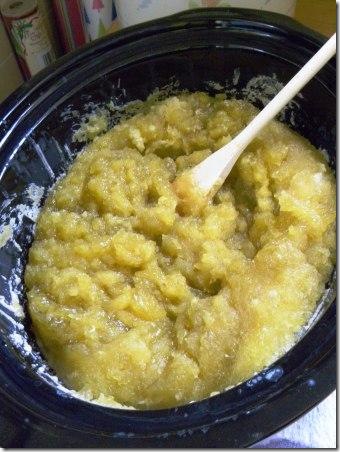
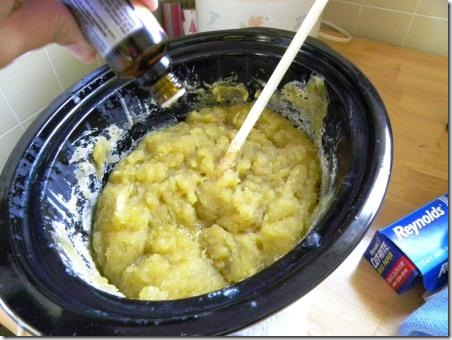

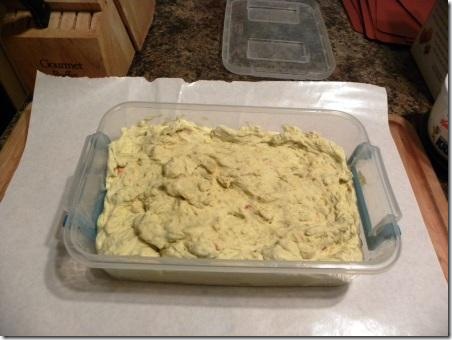
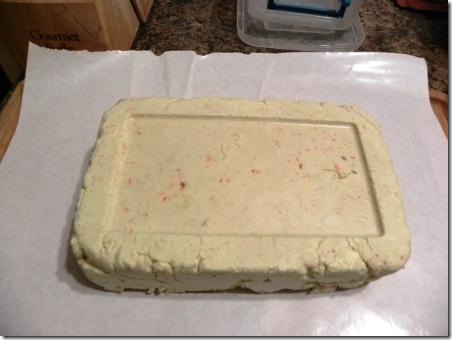
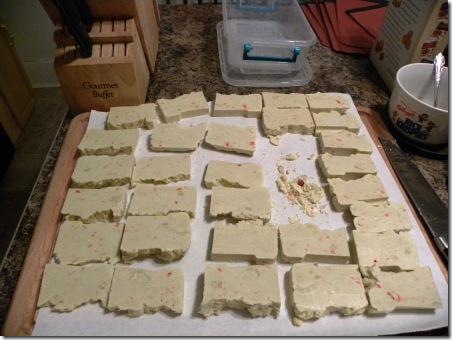

This is so cool! Hopefully someday I can try it. Thanks!
ReplyDeleteSuch a cool idea! I'll have to look into trying it. Talk about a great Christmas gift idea! :)
ReplyDeleteI'd be glad to share what i've learned! feel free to ask questions.
ReplyDeleteYou made this seem so easy. Thanks for the great tutorial. I've always wondered how to make soap and it does look easy enough to try.
ReplyDeleteThanks for the instructions! Though somehow the idea of putting a pinch of lye on my tongue and feeling a bit shocked doesn't sound super appealing ;)
ReplyDeleteLove it - is there any way to make the actual soap a bit "prettier" looking for gifts. Thank for sharing!
ReplyDeleteChristine at christineiscooking.com
Well, prettier is in the eye of the beholder. You can trim off the jagged edge when you cut the soap and use a potato peeler to take the sharp corners off. Or, if you start soon (cuz they take longer to dry), you can make a batch of really plain soap (like the batch above), run it through a cheese grater and re-batch or hand mill it. It'll take to moulds much better than the original, and you can be more creative with it. http://livingfromscratch1.blogspot.com/2011/10/christmas-from-scratch-hand-milled-soap.html
ReplyDeleteSorry, I should have been more specific - that didn't come out the way I meant it...lol. It is beautiful as is, I was just wondering if you knew of a way to add color to it if one wanted to. Love your site. Thanks : )
ReplyDeleteChristine at christineiscooking.com
You can use candle dye/good crayons, but it has to be melted first, Liquid RIT, or food coloring (listed in order of ideal-ness)
ReplyDeletethere are also natural pigments (which i think you have to go to a pottery store for) and turmeric turns things yellow and paprika a peachish brown
ReplyDeleteI like this recipe, but want to add a comment because of one concern. I was always told to keep all soap cooking utinsels and pans separate from any cooking. So I would only use an old crock pot and stirring/measuring utinsels that you don't plan to use for food again. That is because of they lye. My two cents, and meant very kindly and out of concern. :)
ReplyDeleteI've done crockpot soap for a couple of years now. Some ideas I've tried:
ReplyDeleteYou can add cocoa powder to get a nice brown colour (it doesn't stain hands or towels).
You can 'cook" the soap on low for three hours, and it will have neutralized enough that you can use the soap the very next day :)
Karen, I'd agree with that as it pertains to hard to clean things (like the immersion blender), wood and maybe plastic. Glass, on the other hand you still need to be cautious of, but it will come totally clean with a good scrub. Crock pots are enameled with glass, but the bigger problem with them is getting all that soap out of there.
ReplyDeleteAnn-Marie,I did a whole post on the things you can add to soap
http://livingfromscratch1.blogspot.com/2011/10/christmas-from-scratch-hand-milled-soap.html
My Mother made lye soap as far back as i can remember. she made it from rendered fat (lard) and lye. That is all I can remember. She used this for laundry and washing our dishes, yuck. She also rubbed a paste on our poison ivy which never seemed to last very long. At age 70 I have often wished that I had learned more about those forgotten arts. Thanks for the lesson. i think will try this with my Granddaughter
ReplyDeletewhere does one get lye?
ReplyDeleteIn the plumbing section at lowes or true value... It's called Roebuck crystal drain opener and you have to make sure it says something along the lines of 100% sodium hydroxide
ReplyDelete*roebic*
ReplyDeletegreat
ReplyDeleteI wonder what would happen if you used a crock pot liner?
ReplyDeleteI've been wondering that myself, and plan on trying it next time I soap. Unfortunately, I fo so soap crazy in late fall, telling myself I'm "making Christmas Presents" that I usually don't have to make any more for the rest of the year. I may hafta wait, but I'd love to hear what happens if anyone else tries it!
ReplyDeleteThis is great! Thanks! Do you have a recipe for the measurements?
ReplyDeleteAll measurements are by weight, not by volume. Honestly, I never use the same recipe twice. I plug in whatever oils I have into a soap lye calculator and it generates the recipe for me. http://www.soapcalc.net/calc/soapcalcWP.asp To find out what oils impart what characteristics into your soap (to help you decide what to use), consult a chart like this one:http://www.soapies-supplies.com/shop/properties-chart.html
ReplyDeleteIt's really best not to trust recipes you find on the internet, since chemical burns can ensue if they're wrong. Find a trustworthy lye calc and let science find you a safe recipe.
ReplyDeleteThis is such a clear tutorial, thanks! Really wishing I hadn't given away my crock pot now :(
ReplyDelete